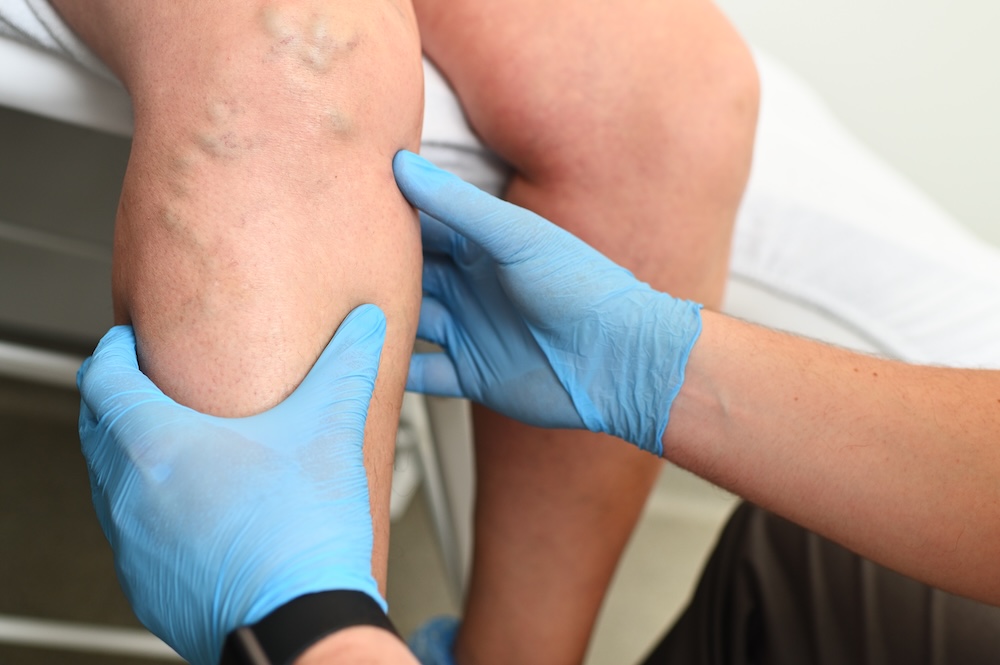Varicose Veins
What are varicose veins?
Varicose veins are enlarged, twisted veins that are visible under the skin, typically on the legs. They occur when vein valves malfunction, allowing blood to pool in the veins instead of flowing back to the heart. Varicose veins are very common, affecting about one-third of adults.
How do they look?
Varicose veins appear as bulging, rope-like veins that are blue or purple in color. They are usually larger than 3 mm in diameter when standing. Smaller spider veins or reticular veins may also be present.
Symptoms
While some people have no symptoms, many experience:
• Aching, heaviness, or pain in the legs, especially later in the day
• Swelling in the legs and ankles
• Itching around veins
• Muscle cramps in the legs
• Restless legs [4]
These symptoms often worsen with prolonged standing and improve with leg elevation

Complications
If left untreated, varicose veins can lead to more serious issues like:
• Bleeding from damaged veins
• Skin changes like eczema, pigmentation, or hardening
• Venous ulcers (open sores on the legs)
• Blood clots
• Chronic venous insufficiency [5]
Causes and Risk Factors
Several factors can increase your risk of developing varicose veins:
1. Genetics: There is a strong hereditary component. If your parents had varicose veins, you're more likely to develop them.
2. Gender: Women are 3 times more likely than men to develop varicose veins.
3. Age: Risk increases as you get older.
4. Pregnancy: Hormonal changes and increased blood volume during pregnancy can cause varicose veins.
5. Obesity: Excess weight puts more pressure on your veins.
6. Prolonged standing or sitting: This increases pressure in the veins of your legs.
7. Hormonal influences: Birth control pills and hormone replacement therapy may increase risk.
Remember, every case is unique. Your doctor will recommend the best treatment plan for your specific situation.
Treatment Options
Several treatment options are available, each with varying success rates:
1. Compression stockings: These can help manage symptoms but don't remove existing varicose veins.
2. Sclerotherapy (Click For More Information) : A solution is injected to close off smaller veins. This has the ability to treat any superficial vein, and is one of the oldest techniques available. Success rates of 60-80% have been reported, which has only increased since the advent of ultrasound guidance..
3. Endovenous laser or radiofrequency ablation (Click For More Information): These minimally invasive procedures use heat to seal off problematic veins. Published clinical studies show that the initial success rate of endovenous laser ablation between 95-98% with far fewer complications and downtime as compared to vein stripping. .
4. Surgery (ligation and stripping): Traditional surgery to remove varicose veins. While effective, it has largely been replaced by less invasive options due to longer recovery times and higher complication rates. There tends to be a high rate of new vein growth/recurrence with this more traditional technique. .
5. Ambulatory phlebectomy: A minimally invasive procedure to remove surface veins through tiny incisions..
Remember, the best treatment for you depends on the size and location of your varicose veins, as well as your overall health. Consult with your vein specialist to determine the most appropriate option for your situation.
